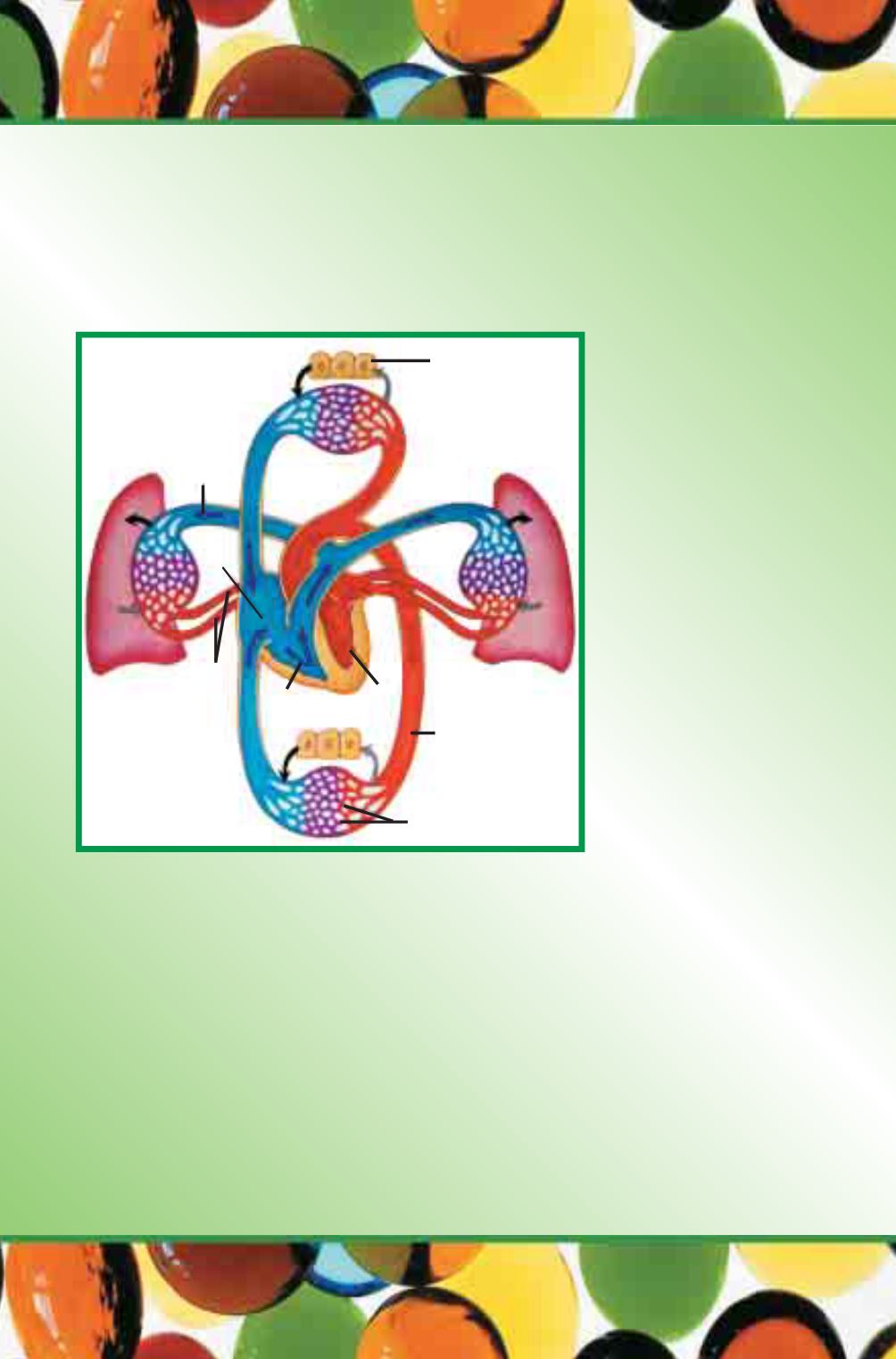
The heart, which
is a muscular organ of
about the size of one's
fist, consists of two
halves. There are two
pumps in these sec-
tions. The left pump,
which is stronger, dri-
ves oxygen-rich blood
to all parts of the
body. The right pump
is weaker than the
former and pumps
oxygen-poor blood to the lungs. This transport from the heart to
the lungs is over a short distance and is, therefore, called the
"small circulation". The former is called the "large circulation".
Each of these halves of the heart is divided into two further
sections. Blood between them passes to the other section through
heart valves. These pumps operate unceasingly with a great
amount of energy, thanks to which blood circulates through our
bodies 1,000 times a day.
Original
Pumps
in
the
Heart
64
lung
lung
tissue cells
pulmonary
artery
right
atrium
left
atrium
left ventricle
right ventricle
aorta
large circula-
tion capillaries
pulmonary
vein
CO
2
CO
2
CO
2
O
2
O
2
O
2
Blood circulates
through the en-
tire body, from
the brain to the
lungs, thanks to
the heart.


